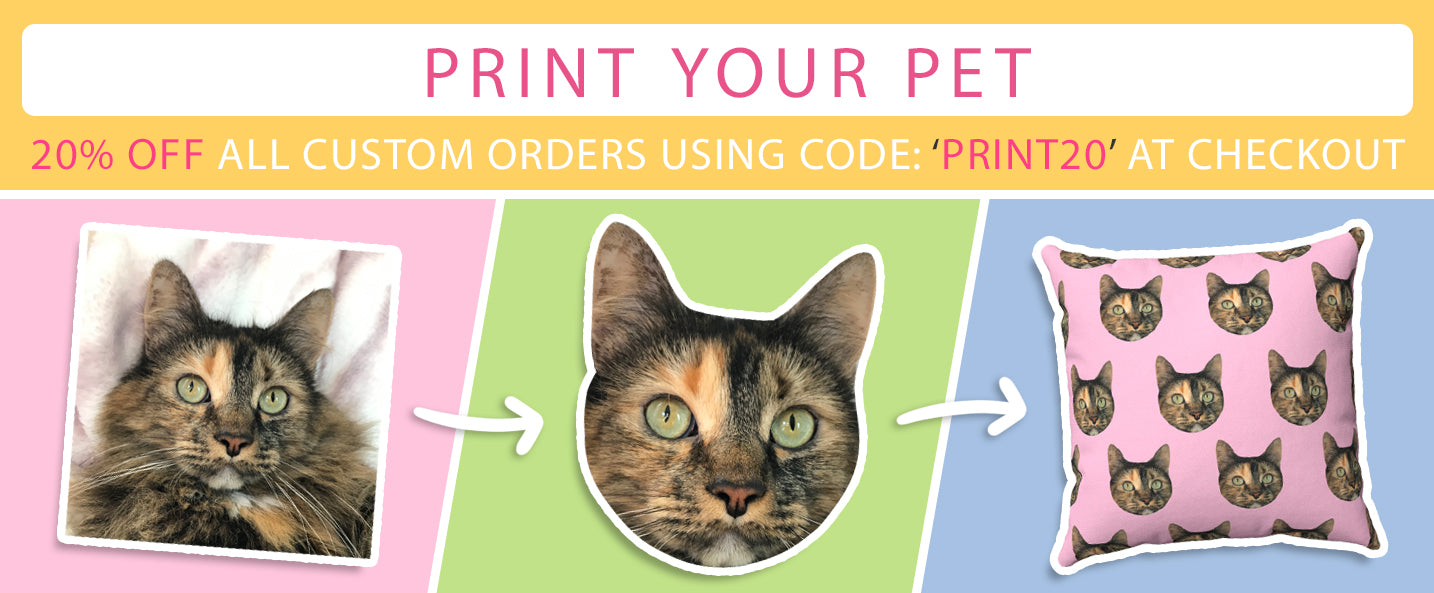"Tortitude" Is Real, And Other Fun Facts About Tortoiseshell Cats

Ready for some fast feline facts about Tortoiseshell Cats? These notoriously feisty felines are surrounded by some pretty cool facts - and fiction - from rare genetics to a pretty metal story involving the blood of a mythical goddess. Man, Torties are great.
Tortoiseshell Cats Are Not Actually a Breed of Cat
Tortoiseshell actually refers to the cat’s coat color and fur pattern. Affectionately shortened to “Torties,” Tortoiseshell cats are named for their distinctive multicolored coats featuring a constellation of black, brown, amber, red, cinnamon and chocolate – and very little or no white markings.
Often confused with calico cats, who are predominately white, orange and black, the Tortoiseshell pattern can be seen in Persians, Cornish Rex, and the Japanese Bobtail - just a few of the many breeds that can produce a tortoiseshell coat, both long and short-haired.
Some variations of the tortoiseshell include "dilution," which results in softer, muted greys and creams instead of red and black. There is also the "Torbie" pattern, which is a tortoiseshell cat with tabby stripes.
Torties are Full of “Tortitude."

If you are the servant – er, owner – of a multicolored kitty like a calico or tortoiseshell, you might already know what “tortitude” is. But for those who aren’t aware, there is a bit of a myth surrounding our multicolored feline friends. “Tortitude” is often affectionately applied to a cat with a tortoiseshell or calico coat that also happens to have a bit more, well, cattitude.
Torties are known for being a bit more challenging, strong-willed, and can be possessive of their human. Other words used to describe torties are “fiercely independent, feisty and unpredictable,” according to Ingrid King, author of the Conscious Cat.
If your tortie has a bit of ‘tude, don’t worry – you’re not crazy for thinking it! According to a study from veterinarians at the University of California, cats with calico and tortoiseshell coats tend to challenge their humans more often than other less flashy felines.
Looking for a way to tame your cat's tortitude? Be sure to provide your kitty with plenty of indoor enrichment, like food puzzles or catnip kicker toys as an outlet for all that pent up 'tude!
Torties are almost always female.

The color of a cat’s fur is inherited from its parents, much like our human hair color. Because the genes responsible for orange and black fur color in cats are carried on the X chromosome, torties (and other multicolored kitties) are typically born female. This fun feline genetic detail also applies to calico cats!
About 1 in 3,000 Torties are male

Because each color is carried on a different X chromosome, a cat needs two X chromosomes to be born with a calico or tortoiseshell pattern, which means they will almost always be born female. However, due to a rare genetic mutation that results in an XXY genotype, a male tortie may be born. But that’s a 1 in 3,000 occurrence – a 0.3% chance!
Torties Are Mythical

Torties - and calicos, too - are often the focus of folklore and legend. In the United States, they’re referred to as “money cats," being that male torties and calicos are so rare. In Scotland and Ireland, it’s seen as good luck when a male tortoiseshell comes into your home.
Japanese fisherman believed that bringing a tortie onto their boat would protect them from storms and ghosts.
Even the Khmers of Southeast Asia even developed an explanation as to the origins of a tortie: they came from “the blood of a young goddess born of a lotus flower during a magical ritual”.
Do you have a Tortie at home? Now you can get their photo printed on any custom item, like a mug or blanket! Click here for more details.




















I have a tourtie cat named R.C., a really awesome person. She is cute to the max! definately has “tortitude” like no other. She has become the love of my life, and I am having a blast living in her house. I allways have trouble getting her to eat her meals, she licks her food instead of chewing it. she has a lot of alergies, so she licks herself all day. She stays happy though, and welcomes me everyday when I get home from work. I am soooo glad she is with me! Tourties are the best!!
Jerry
My tortitude girl is very active, quick to attack things move, but in a playful way. I started her leash training when she was 7 weeks. We spend hours outdoors, she gets an attitude in the morning when I leave for work, she want to come with me. She loves the snow, and likes hanging out with us by the lake. Not afraid of water she also loves to watch us fish. Her favorite indoor pastime is to terrorize the older cat. Although she can be a hand full this little girl is the one of the best companions that has ever chose me.
My calico, Parker, lives in her own little tortitude world: dainty, prissy, sweet, fierce, oblivious and much more, depending on her persuasion at any given moment. She’s mostly obliging when you want to enter that world of your own accord; but, if she’s decided she wants you in on the party, there’s no turning her away! And, just as quickly as it comes about, she’s off doing her own thing again. To that end, she’ll pick (play) fights with the other cats whenever she feels sees fit, whether they like it or not. If they react with any more spirit than she deems appropriate, all of a sudden she’s the victim and she’ll start hissing and slapping. If they try to disengage, she’ll likely take the opportunity to pounce on them again! The very definition of: “She started it!”
She’ll take forever to eat any kind of food given to her, but on the rare occasions she, as an inside cat, gets to catch live prey and her killer instincts kick in, it’s like she’s possessed! The first time I saw Parker catch a lizard, she immediately got it so far down her throat, just the nub of its tail (by then writhing, abandoned on the floor) and its feet were hanging out of her mouth. I totally underestimated the beast awakened inside her, and thought that the creature might be saved if I calmly provoked her to spit it out. No! As I approached, she ran off groaning at me. She’d stop and watch me; and, if I approached again she’d scamper off voicing her annoyance. Occasionally, the lizard would futilely attempt to wriggle out of her gullet, and by the look on her face, she got some, let’s say, indecent pleasures from it. When I’d given up trying to be a hero, she, staring at me with blank, shark eyes, crunched down (just once!), lifted her head with widening maw, and, in a hearty gulp, swallowed the poor thing whole. She spent the next hour investigating every inch of the house for more potential prey. Soon after, she went back to the cat I thought I knew so well. I swear, this traumatized me! My image of her was shattered! How could I trust anything or anyone after that!
Thanks for that, Parker. Your toritude shook me to my very core.
This article confirms what I have always believed to be true about tortoiseshell cats. I own a luxury cat hotel in Salem, Oregon. Some of my clients who are owned by tortoiseshell cats have often asked me why their cats have such “cattitude”. I tell them that it does seem to be a trend, and that I see it all the time. Now, I have definitive proof, and will share this article with them! Much thanks!
This article confirms what I have always believed to be true about tortoiseshell cats. I own a luxury cat hotel in Salem, Oregon. Some of my clients who are owned by tortoiseshell cats have often asked me why their cats have such “cattitude”. I tell them that it does seem to be a trend, and that I see it all the time. Now, I have definitive proof, and will share this article with them! Much thanks!
Leave a comment